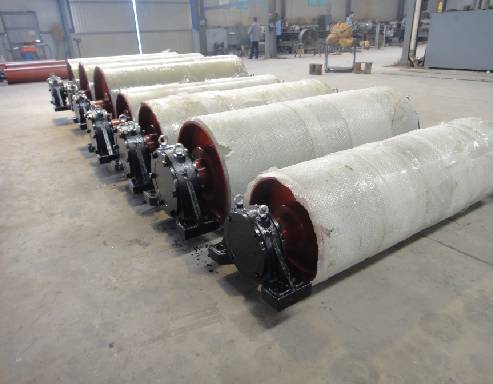 Afrikaans
Afrikaans  Albanian
Albanian  Amharic
Amharic  Arabic
Arabic  Armenian
Armenian  Azerbaijani
Azerbaijani  Basque
Basque  Belarusian
Belarusian  Bengali
Bengali  Bosnian
Bosnian  Bulgarian
Bulgarian  Catalan
Catalan  Cebuano
Cebuano  Corsican
Corsican  Croatian
Croatian  Czech
Czech  Danish
Danish  Dutch
Dutch  English
English  Esperanto
Esperanto  Estonian
Estonian  Finnish
Finnish  French
French  Frisian
Frisian  Galician
Galician  Georgian
Georgian  German
German  Greek
Greek  Gujarati
Gujarati  Haitian Creole
Haitian Creole  hausa
hausa  hawaiian
hawaiian  Hebrew
Hebrew  Hindi
Hindi  Miao
Miao  Hungarian
Hungarian  Icelandic
Icelandic  igbo
igbo  Indonesian
Indonesian  irish
irish  Italian
Italian  Japanese
Japanese  Javanese
Javanese  Kannada
Kannada  kazakh
kazakh  Khmer
Khmer  Rwandese
Rwandese  Korean
Korean  Kurdish
Kurdish  Kyrgyz
Kyrgyz  Lao
Lao  Latin
Latin  Latvian
Latvian  Lithuanian
Lithuanian  Luxembourgish
Luxembourgish  Macedonian
Macedonian  Malgashi
Malgashi  Malay
Malay  Malayalam
Malayalam  Maltese
Maltese  Maori
Maori  Marathi
Marathi  Mongolian
Mongolian  Myanmar
Myanmar  Nepali
Nepali  Norwegian
Norwegian  Norwegian
Norwegian  Occitan
Occitan  Pashto
Pashto  Persian
Persian  Polish
Polish  Portuguese
Portuguese  Punjabi
Punjabi  Romanian
Romanian  Russian
Russian  Samoan
Samoan  Scottish Gaelic
Scottish Gaelic  Serbian
Serbian  Sesotho
Sesotho  Shona
Shona  Sindhi
Sindhi  Sinhala
Sinhala  Slovak
Slovak  Slovenian
Slovenian  Somali
Somali  Spanish
Spanish  Sundanese
Sundanese  Swahili
Swahili  Swedish
Swedish  Tagalog
Tagalog  Tajik
Tajik  Tamil
Tamil  Tatar
Tatar  Telugu
Telugu  Thai
Thai  Turkish
Turkish  Turkmen
Turkmen  Ukrainian
Ukrainian  Urdu
Urdu  Uighur
Uighur  Uzbek
Uzbek  Vietnamese
Vietnamese  Welsh
Welsh  Bantu
Bantu  Yiddish
Yiddish  Yoruba
Yoruba  Zulu
Zulu drive pulley key
Understanding Drive Pulleys and Keys Their Importance in Mechanical Systems
In the world of mechanical engineering, the terms drive pulley and key are fundamental components that play vital roles in the transmission of power within various machines and systems. Whether it’s in industrial applications, automotive engineering, or general machinery, understanding these components is essential for ensuring efficient operation and reliability.
Drive Pulleys An Overview
A drive pulley is a circular component that is part of a system used to transmit rotational motion and power. Typically made from strong materials like steel, aluminum, or thermoplastics, drive pulleys interact with belts, chains, or ropes to facilitate movement. The effectiveness of a drive pulley is largely determined by its design, size, and material.
Drive pulleys are classified primarily into two types fixed and adjustable. Fixed drive pulleys maintain a constant position, ensuring consistent speed and tension. In contrast, adjustable pulleys allow for changes in tension and can be repositioned to adapt to varying operational demands. This flexibility is crucial in applications where load conditions frequently change.
One common application of drive pulleys is seen in conveyor systems, where they help in moving materials efficiently from one location to another. In automotive engines, drive pulleys play a significant role in the operation of accessories such as alternators, water pumps, and air conditioning units. The belt that connects these pulleys must maintain optimal tension to avoid slippage and ensure smooth operation.
The Role of the Key in Mechanical Systems
While drive pulleys are essential for power transmission, the key is a crucial component that helps to secure the connection between the pulley and its shaft. A key is typically a small, rectangular metal piece that fits into a groove on the pulley and matches a corresponding groove on the shaft. This design effectively locks the pulley in place, allowing it to rotate with the shaft while preventing slippage.
drive pulley key

There are several types of keys, including square keys, rectangular keys, and tapered keys, each serving specific purposes based on the design and requirements of the mechanical system. The choice of key type can significantly influence the overall performance and durability of the assembly. Tapered keys, for instance, are often used in high-torque applications where a strong grip is necessary.
Importance of Proper Installation
The successful operation of drive pulleys and keys relies not only on choosing the right components but also on proper installation. It is crucial to ensure that the key fits correctly within its grooves. An improperly sized or poorly fitted key can lead to wear and tear, inefficient power transfer, or even catastrophic failure of the system.
Regular maintenance checks are also essential. Mechanical systems can be subject to varying loads and environmental conditions that may affect the integrity of the key and the pulley. Inspecting these components for wear, corrosion, and proper alignment can help in identifying potential issues before they develop into larger problems.
Conclusion
In conclusion, the synergy between drive pulleys and keys is vital to the efficiency and reliability of many mechanical systems. A drive pulley ensures the effective transmission of motion, while the key maintains the integrity of this connection. Understanding the functions, types, and methods of installation for these components is essential for anyone involved in mechanical engineering or maintenance.
As technology continues to evolve, advancements in materials and design will likely enhance the performance of drive pulleys and keys. Recognizing their importance and ensuring proper use and maintenance will not only extend the lifespan of mechanical systems but also contribute to smoother and more efficient operations in various applications. Whether in an industrial setting or within a vehicle, the relationship between drive pulleys and keys is fundamental to achieving optimal performance and reliability.
-
Revolutionizing Conveyor Reliability with Advanced Rubber Lagging PulleysNewsJul.22,2025
-
Powering Precision and Durability with Expert Manufacturers of Conveyor ComponentsNewsJul.22,2025
-
Optimizing Conveyor Systems with Advanced Conveyor AccessoriesNewsJul.22,2025
-
Maximize Conveyor Efficiency with Quality Conveyor Idler PulleysNewsJul.22,2025
-
Future-Proof Your Conveyor System with High-Performance Polyurethane RollerNewsJul.22,2025
-
Driving Efficiency Forward with Quality Idlers and RollersNewsJul.22,2025





























